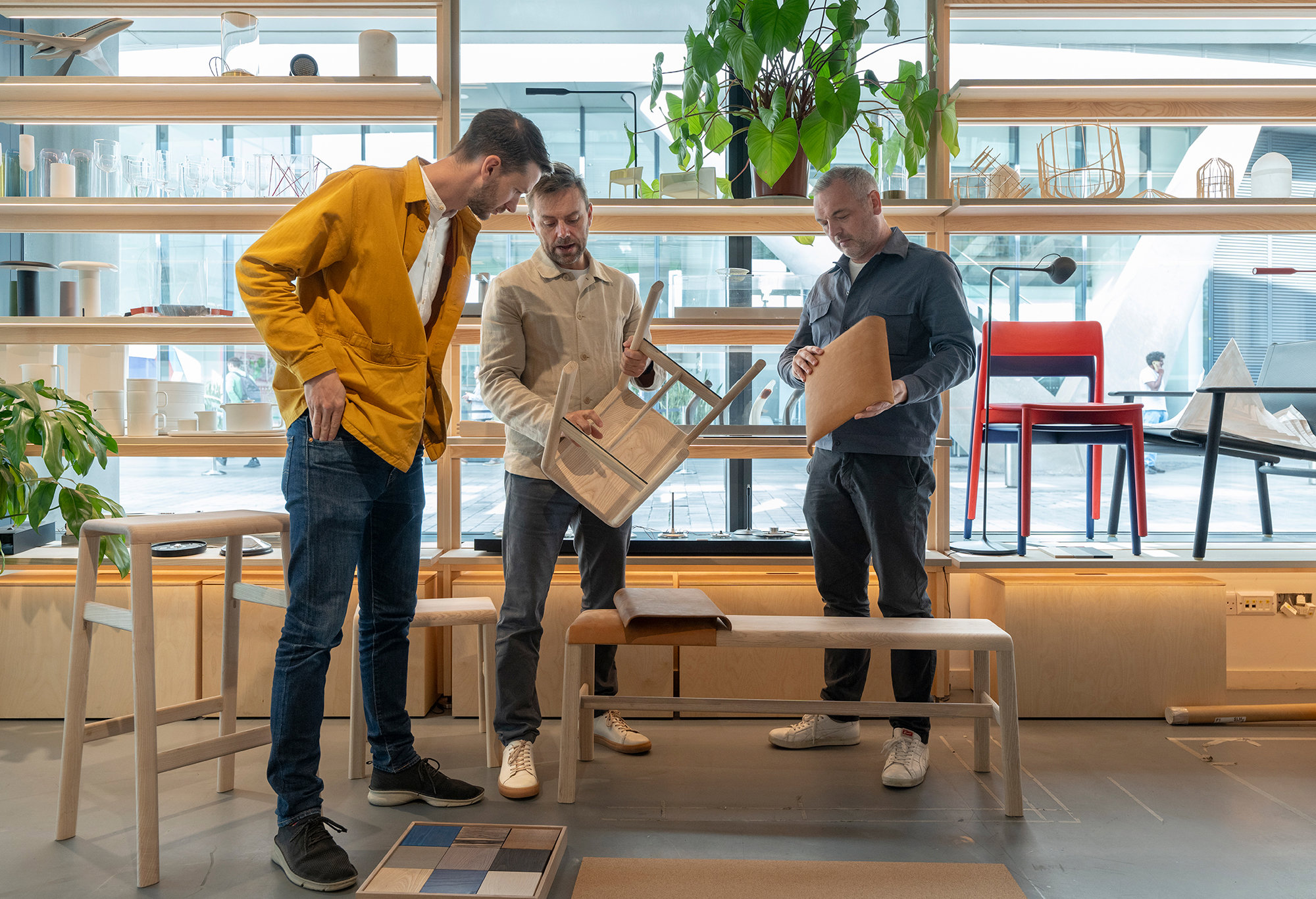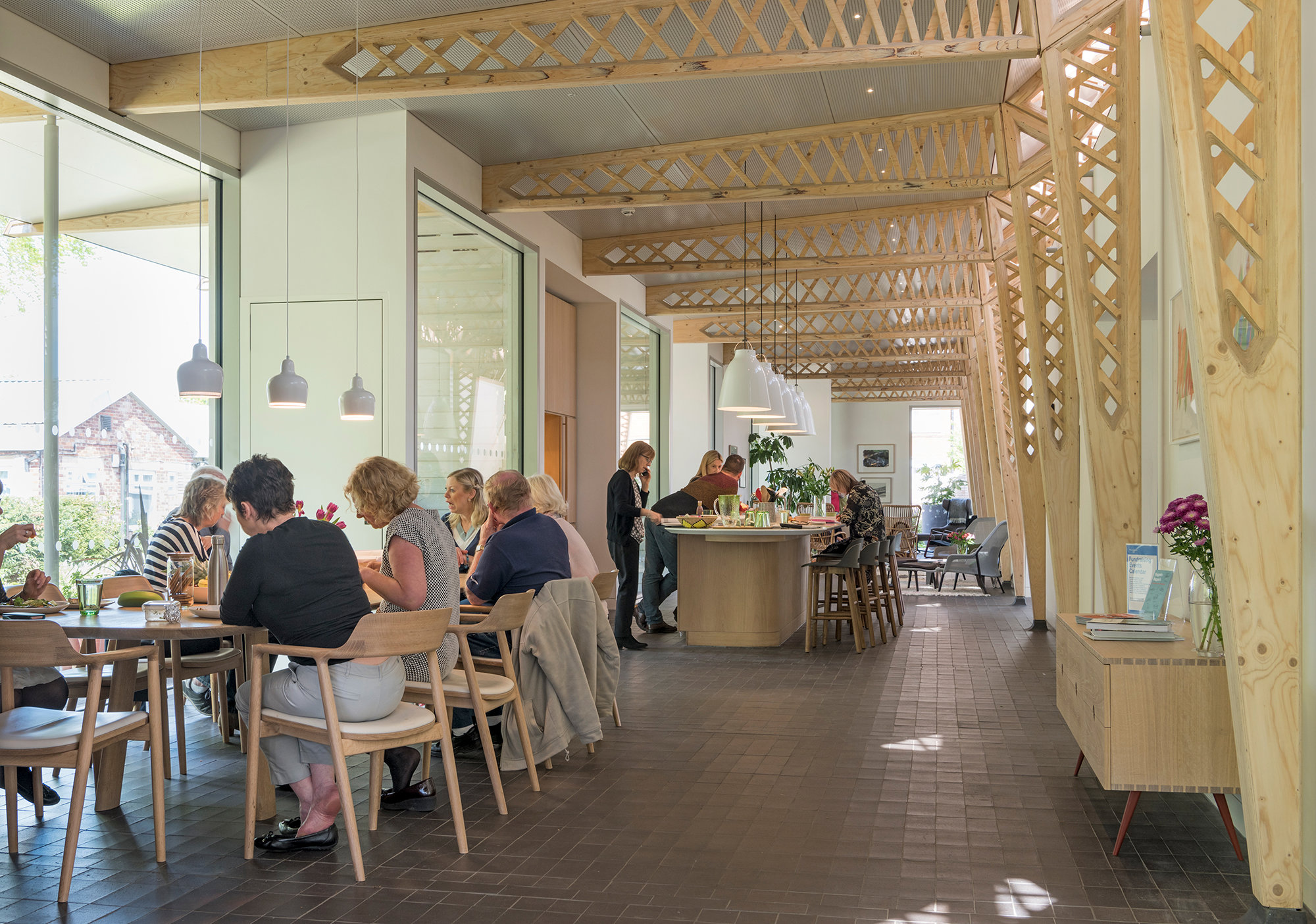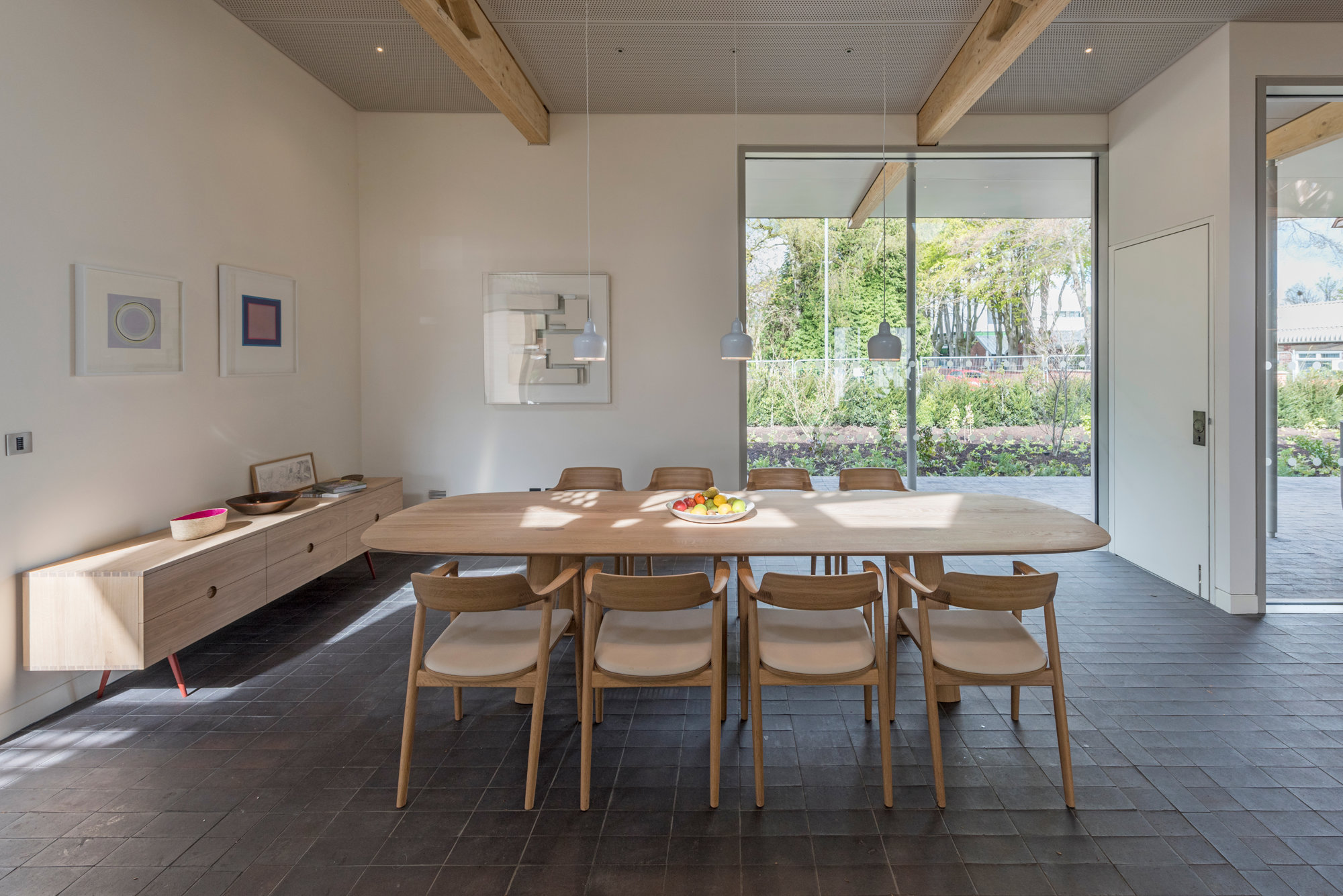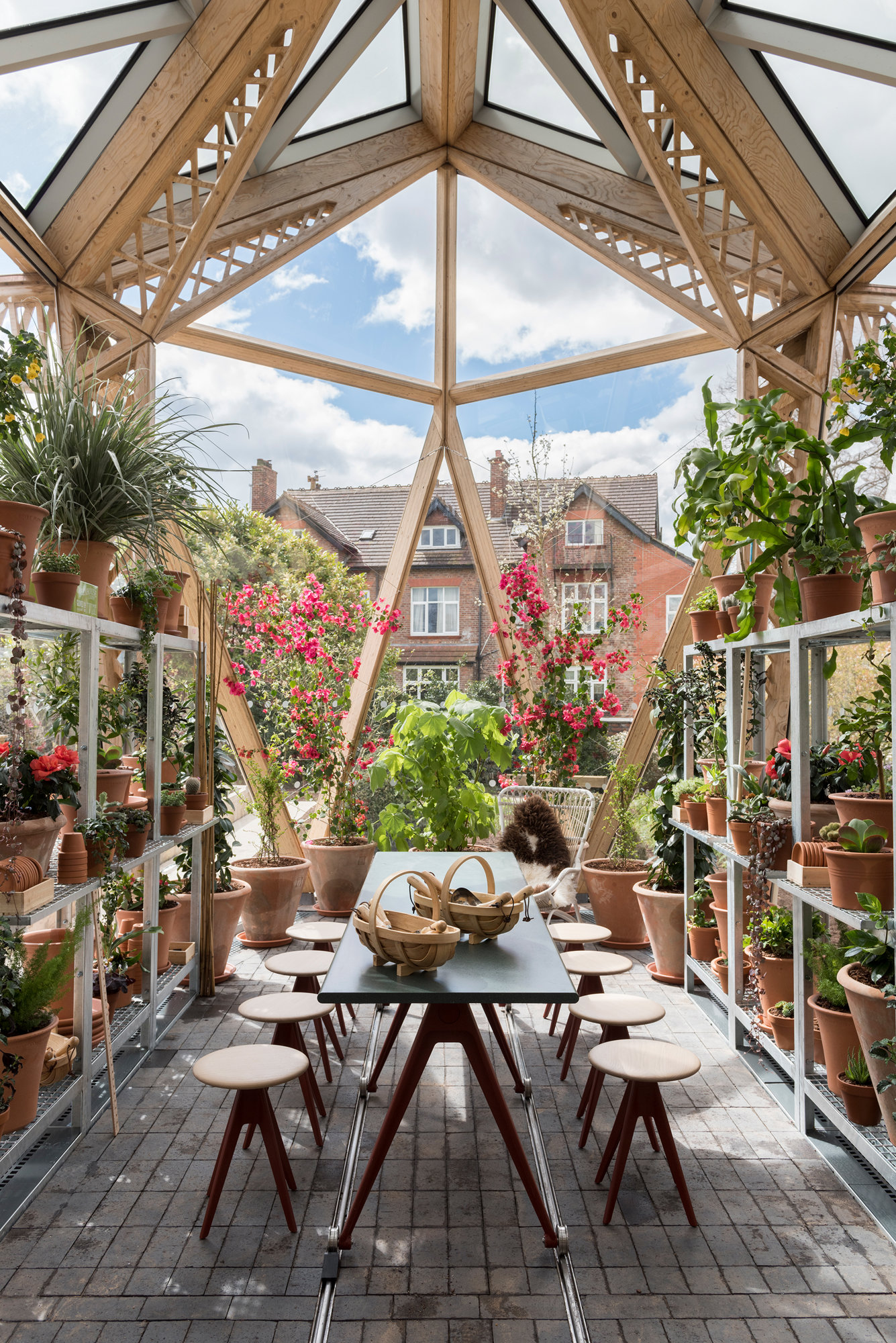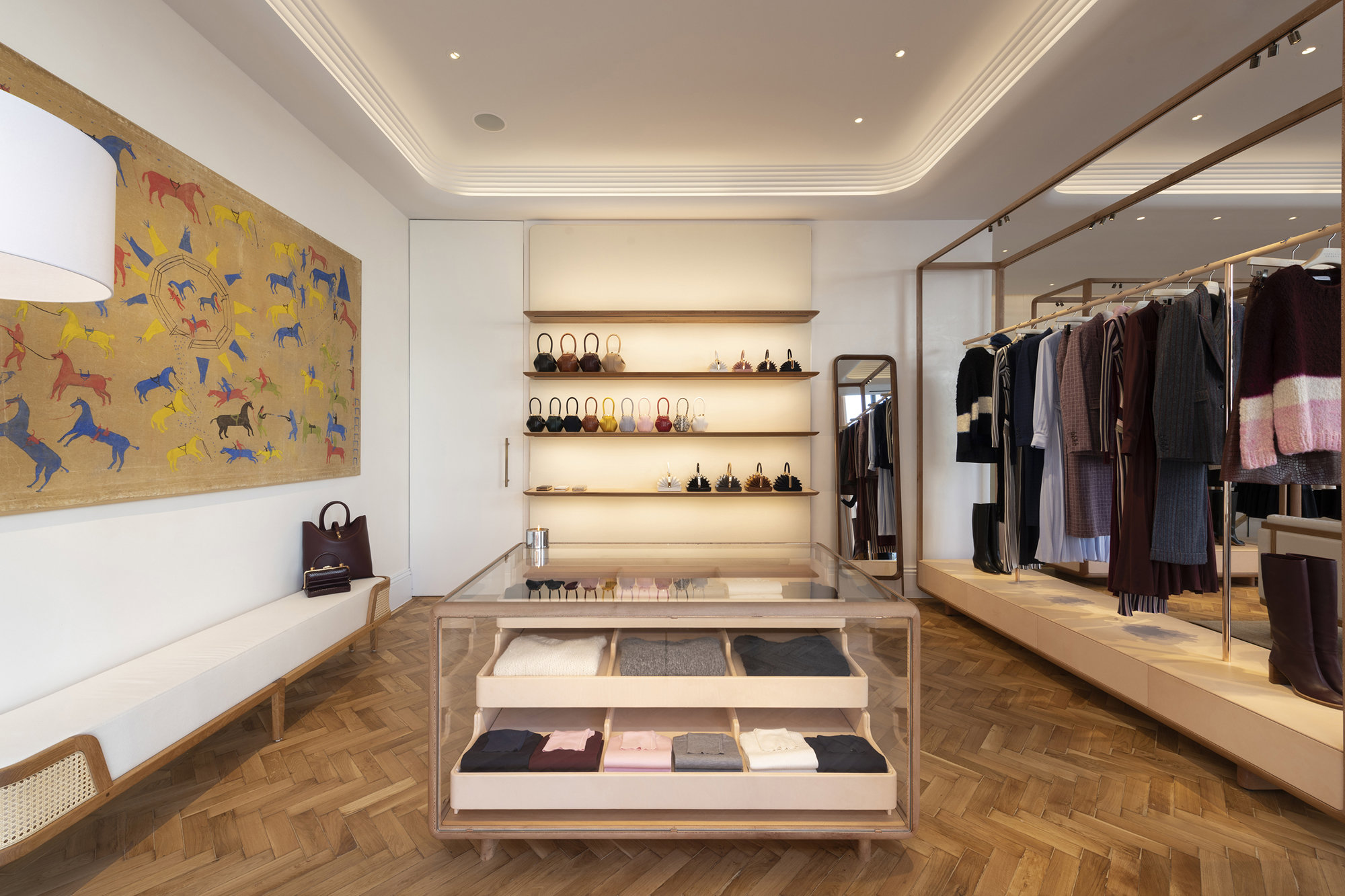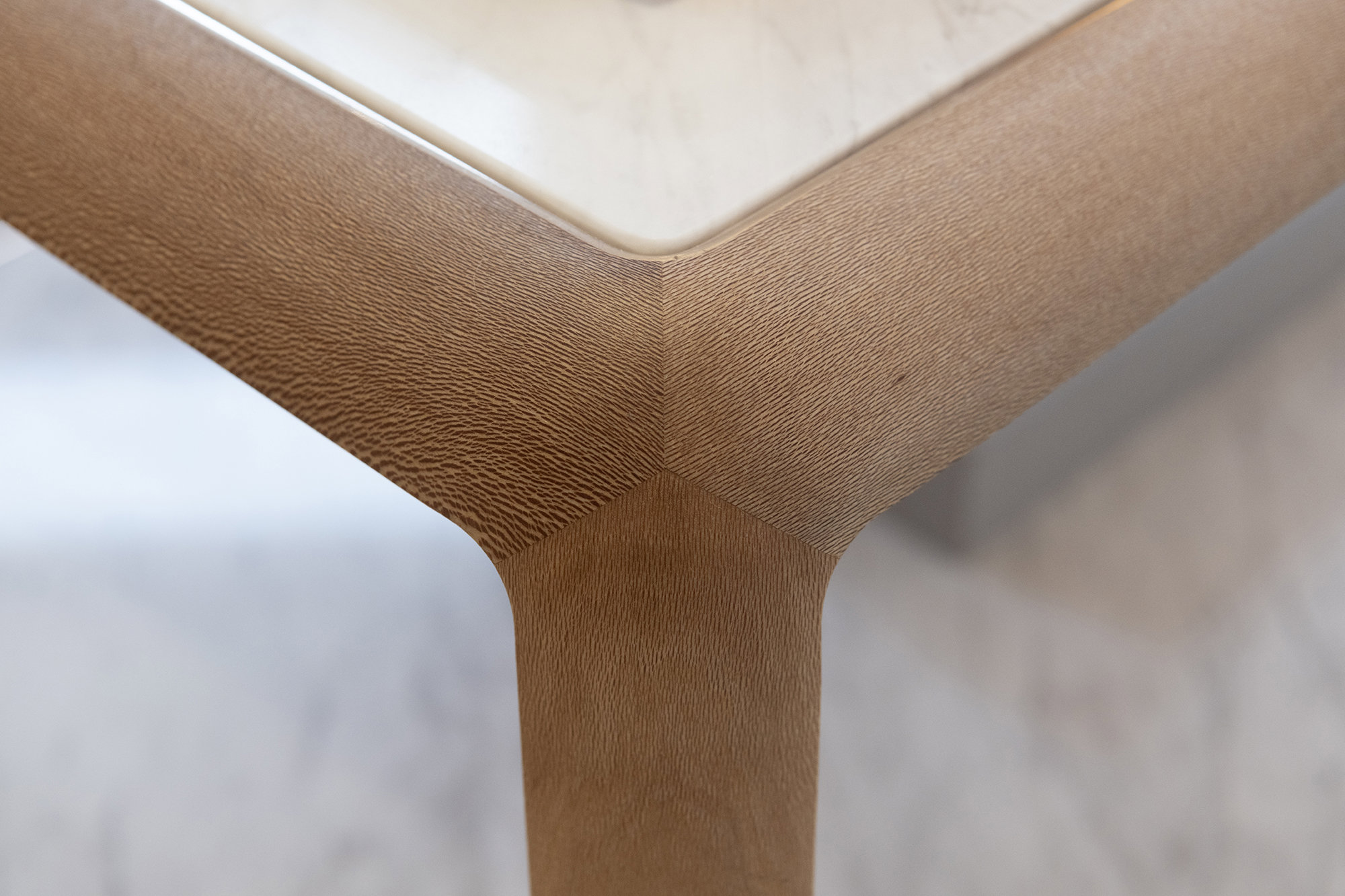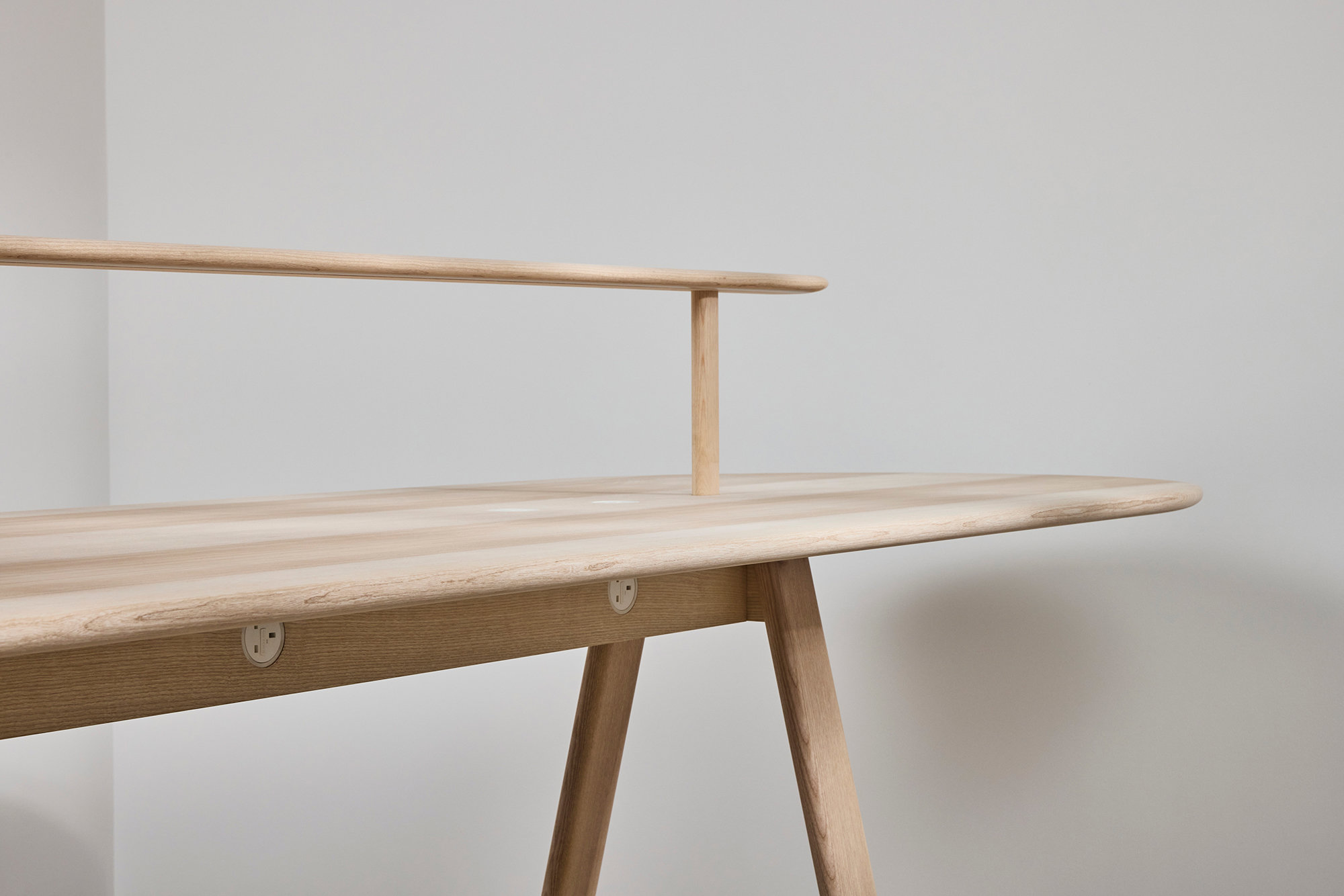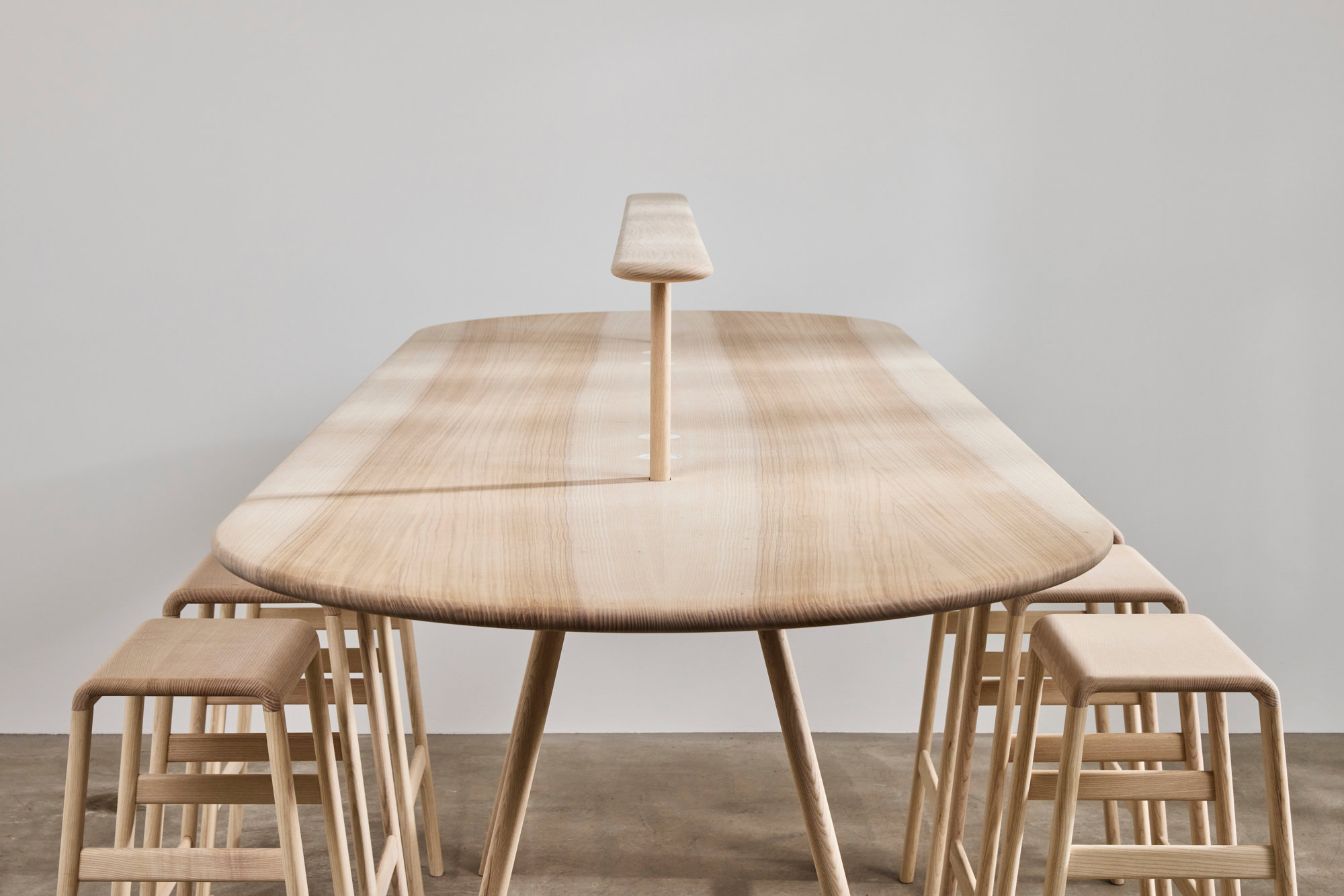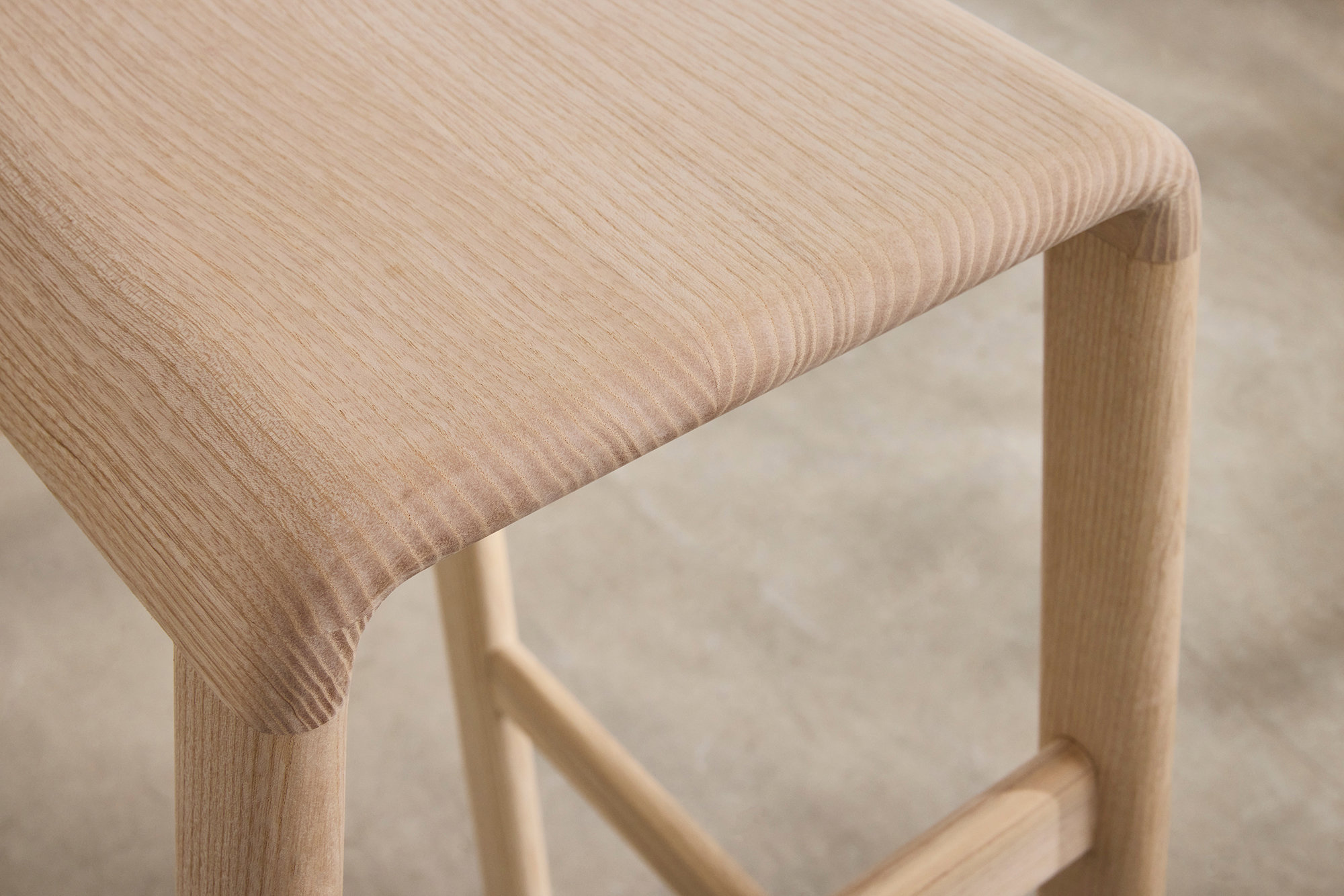‘In Conversation’ is a new series that provides insight into the creative process. The conversations between architects, designers, collaborators and clients are the foundation of every project at Foster + Partners. By sharing knowledge and ideas, we can design more thoughtfully and sustainably.
For over a decade, Foster + Partners Industrial Design has been working with Benchmark, the British manufacturer known for its sustainably crafted timber furniture.
Collaborative projects include pieces for Maggie’s Manchester, a place of refuge where people affected by cancer can find emotional and practical support; the OVO collection, which celebrates craftsmanship in everyday objects; furniture for the Cleveland Clinic, one of the leading teaching hospitals in the United States; and a bespoke range for Gabriela Hearst’s London flagship store. Most recently, the team launched the AYA collection, which enables flexible touchdown working in the office.
In this extract from a recent conversation, Mike Holland, Head of Industrial Design at Foster + Partners, James White, Partner and Industrial Designer at Foster + Partners, and Martin Penrose, Managing Director at Benchmark, reflect on past projects, their creative process and the importance of embracing idiosyncrasies to design more sustainably.
Describe your working relationship…
Mike Holland: We’ve been working with Martin’s team at Benchmark for over a decade, on a range of projects, from bespoke pieces for specific spaces to standalone furniture collections.
Martin Penrose: It’s been quite a journey, and I think over time we have cultivated a healthy relationship between the domains of architecture and craft.
James White: From Maggie’s to AYA, every project has informed the next. That’s the great thing about collaborating for so long, we’re continuously building on a shared body of work.
Tell us about your first time working together…
MH: The kitchen table at Maggie’s was our first project. It was envisaged as the heart of the building, a place where people meet informally for a cup of tea and a chat, which creates a comfortable and homely atmosphere.
We then went on to develop several bespoke pieces for the centre, including kitchen units, shelving, and the glasshouse table that can be wheeled into the garden. Everything is made from solid timber, which has an oiled natural finish that brings the materiality of the wood to the fore.
I think we’re all incredibly proud of that project. The building and furniture work in harmony to reflect the warmth the charity provides to people affected by cancer.
And the OVO furniture range followed on from that?
JW: Yes, OVO was born out of the Maggie’s project. We saw real value in the pieces we’d developed –the softened edges, pillowed surfaces and solidity were all carried over. The collection was designed for both domestic and commercial spaces, celebrating craftsmanship in the everyday.
While working on bespoke furniture for Cleveland Clinic in the US, we looked at how OVO could become flatpack and fully demountable. We also developed reusable packaging – getting rid of anything that would go to landfill and using compostable materials. All of that research fed back into the range.
Our work seems to have evolved quite naturally like that.
Tell us about the Gabriela Hearst flagship store in London…
MP: For me, Gabriela Hearst is a great example of how close collaboration and excellent communication – between our teams, the client, architects and craftspeople – allowed us to push the boundaries of what can be achieved with timber and lighting.
MH: Yes, the attention to detail on that project is extraordinary. We machine-cut the timber to reveal a particular layer of the grain – and the clothes rails, coffee table, knitwear cabinet and shelving units all feature carefully integrated LED lighting.
The whole project was underpinned by a care for the environment that reflects the brand’s sustainable ethos. The majority of the store’s furniture is made from London Plane, which was sourced from a tree that fell during a storm in Lincoln.
How do you design sustainably?
MH: Amongst many other things, collaborating with Benchmark has taught us how we can work with timber in the most sustainable way possible.
We’ve also done a lot of work together on EPDs and certification: thinking about the full life cycle of a product – including what happens at the end of its life. It’s a far more challenging and interesting way of working.
I do think that designers and manufacturers have a responsibility to encourage sustainable consumption, but the most important thing is actually making the right decisions to minimise carbon and create products with longevity.
MP: The AYA range is really the embodiment of all our work on sustainability.
It’s presented with full carbon footprint labelling, a Lifetime Repair Service and a Take Back Scheme. Every piece is designed to be easily disassembled for repair and finished with natural oils to facilitate refurbishment, allowing the pieces to be in use for several lifetimes.
The range is made from solid sustainably sourced GiB [Grown in Britain] ash, and we’ve embraced variation of character to minimise waste.
JW: Imperfection is key. Traditionally, designers and manufacturers have been obsessed with producing something with no flaws – but we have to change that. We need to embrace the idiosyncrasies of recycled materials and greater variations of timber.
This doesn’t detract from the final product; it can actually improve it. With AYA, it’s a more beautiful thing because you’ve allowed the timber to just be timber.
What is the secret to a successful partnership?
MP: Fundamentally, I think good communication has been integral to everything we’ve done together.
Both our teams believe in working with three-dimensional models and real materials first – mocking things up quickly as a conversation starter. I think that’s essential to understand tactility or the weight of something. If you’re trying to come up with a concept by drawing in 3D, it’s not rooted in the real world.
MH: Exactly, prototypes and models are fundamental to what we do. They aid debate and conversation, during the early stages of the design process.
MP: We also align on our love of a challenge – not being put off when things don’t work first time around. That’s particularly important when working with solid timber, which requires time and patience to get right.
Anyone can cut up a bit of wood up and screw it together – but it’s a challenging material to master. There are no two trees alike, no two bits of wood the same, and every species reacts differently.
Ultimately, I think it’s all about being open and challenging each other, to really push things forward. I think that’s something we both strive for, together and within our respective teams.
Martin Penrose is Managing Director at Benchmark. Following a chance meeting with the founder, Sean Sutcliffe in 2018, he joined the company as Project Designer. The following year he became Head of Design and went on to lead the design team for six years. He became Managing Director in 2023. Martin has a degree in BA Product design from Central Saint Martin, and experience working on a wide range of projects, from bespoke interiors to products and furniture.
Mike Holland is Head of Industrial Design at Foster + Partners. He leads a team of 15 designers to develop commercial mass manufactured products, lighting, furniture, building products and transportation for clients across the globe. He also works closely with the architectural studios designing bespoke solutions for a diverse range of projects around the world.
James White joined Foster + Partners in 2007 and has since produced a wide portfolio of mass-manufactured products for leading international companies. His work also extends to the design of bespoke solutions for a variety of architectural projects and is a key player in transport design projects. He was promoted to partner in 2014 and assists with the management of the industrial design team.









